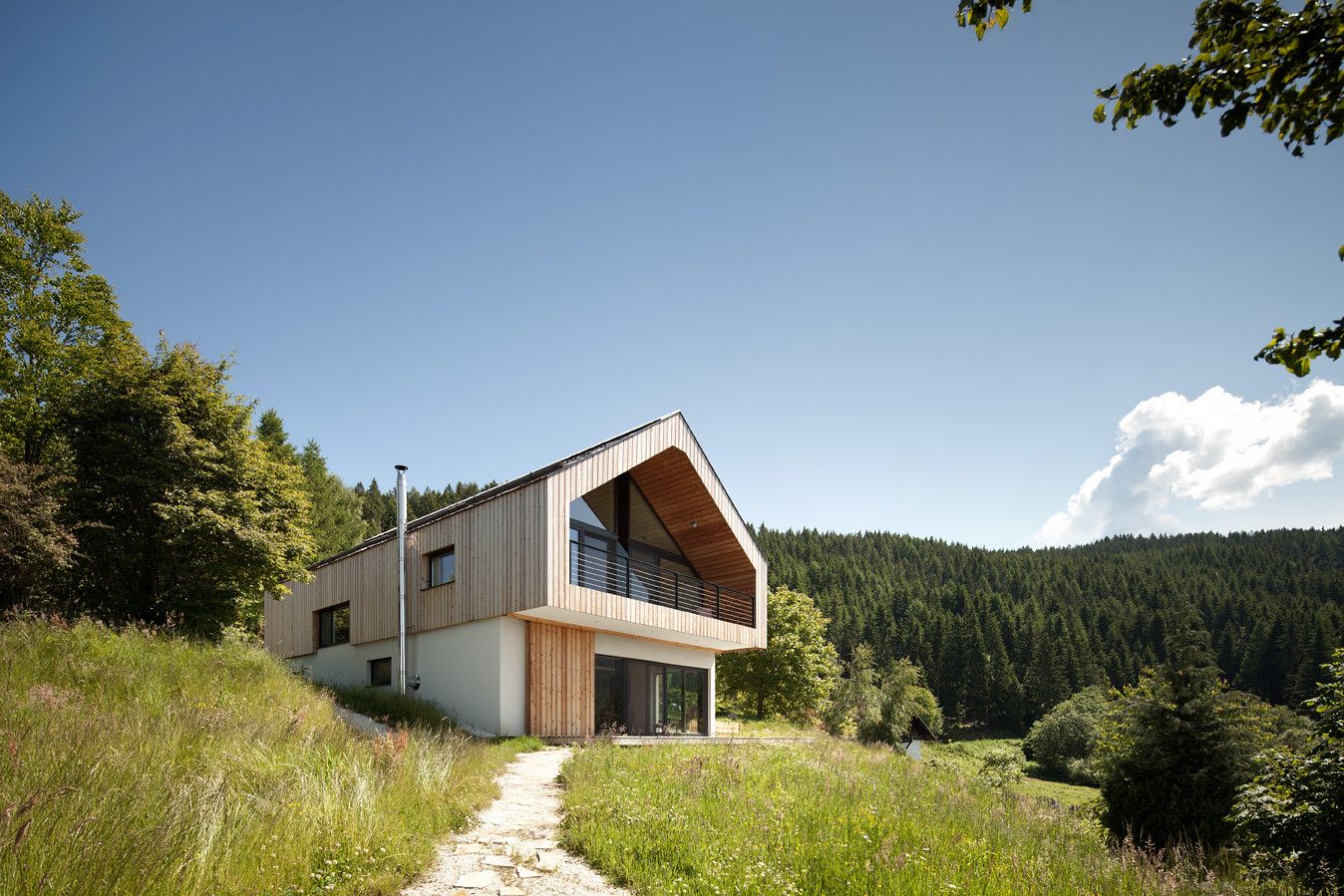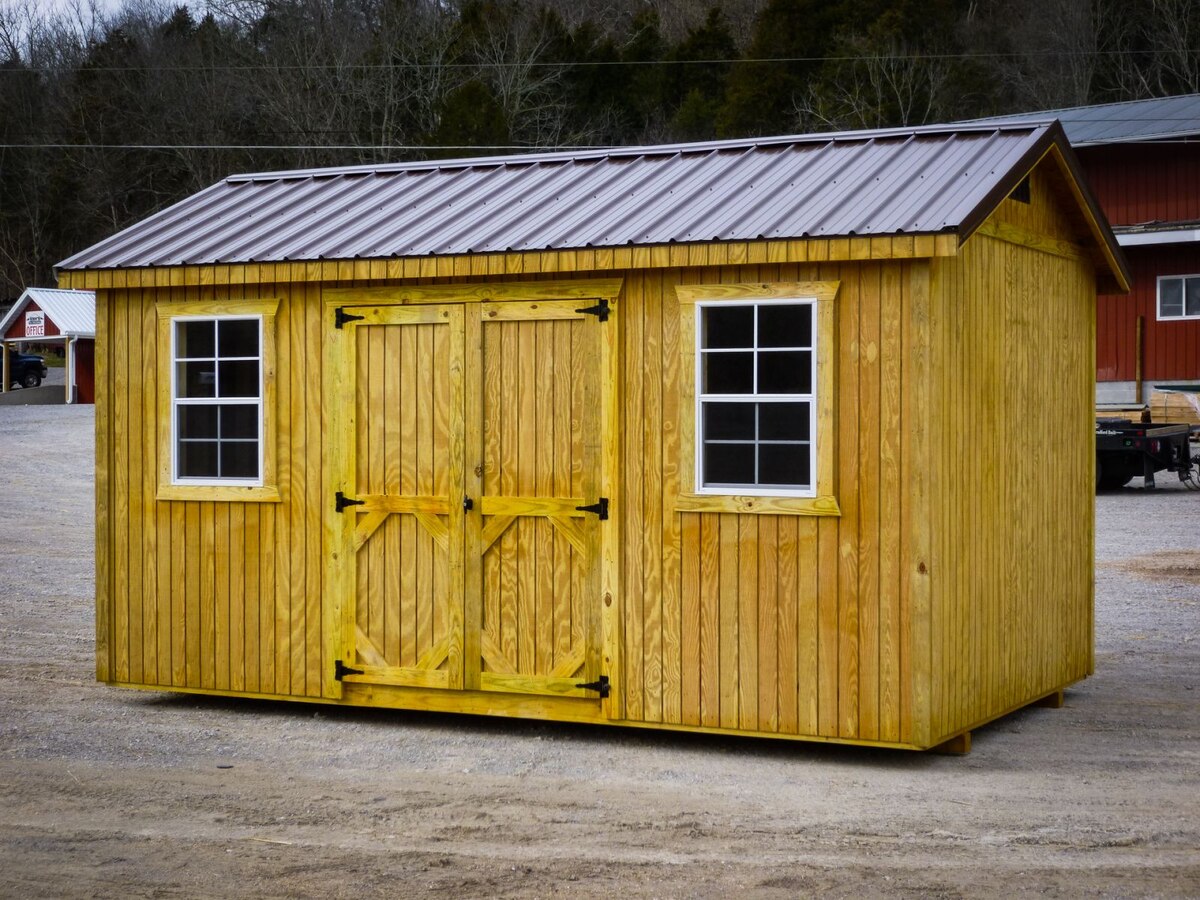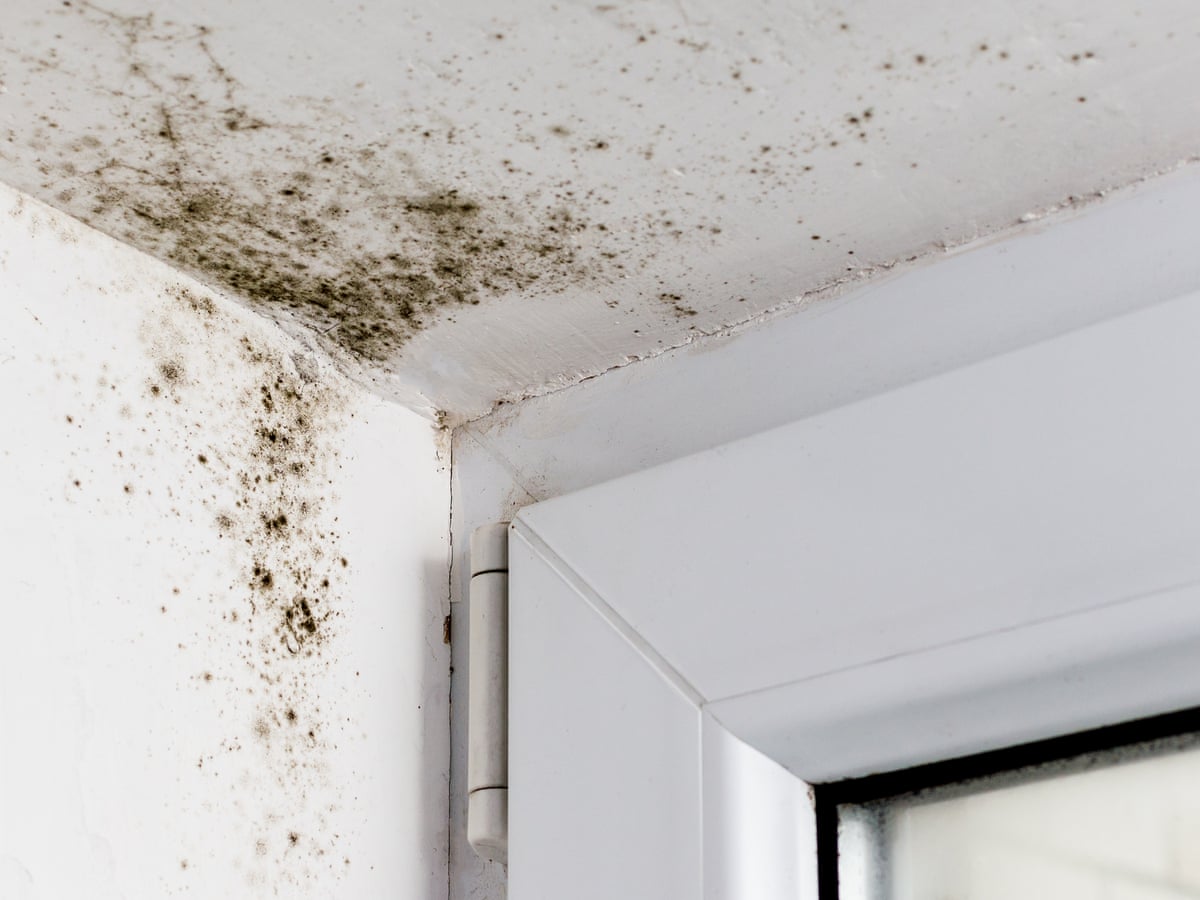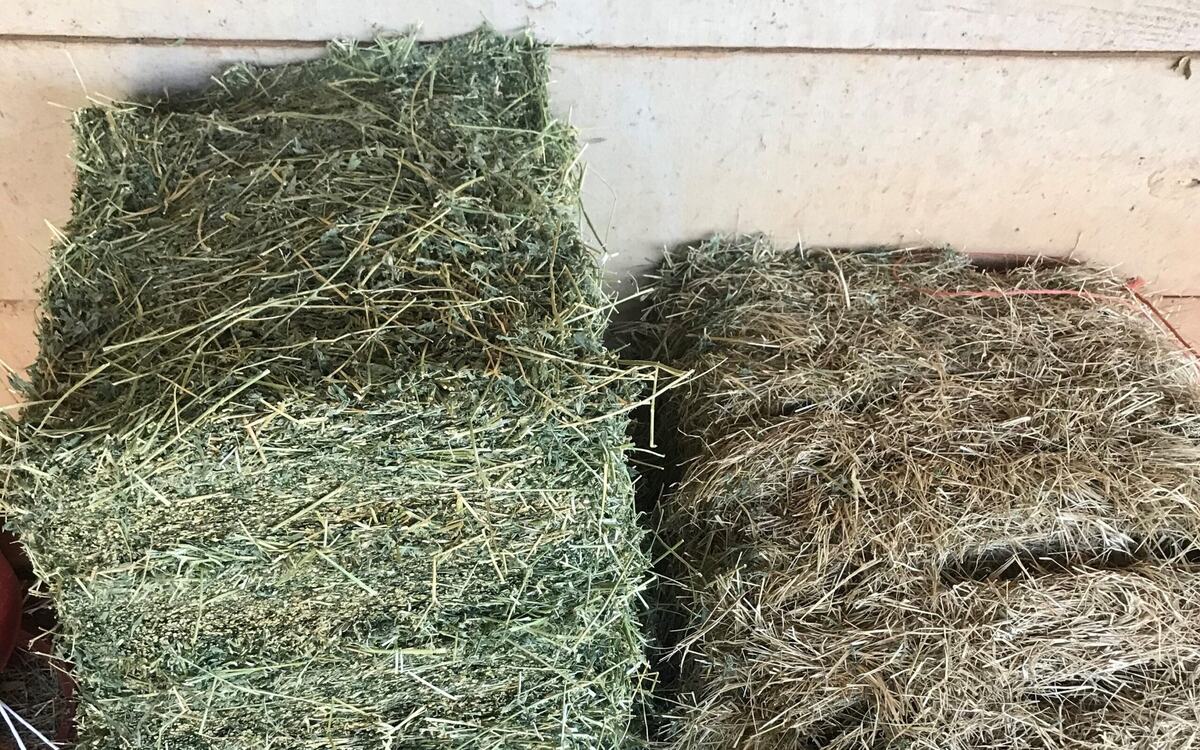Home>Renovation & DIY>Home Renovation Guides>What Does A Gable Look Like?


Home Renovation Guides
What Does A Gable Look Like?
Modified: April 21, 2024
Discover what a gable looks like and how it can enhance your home's appearance with our comprehensive home renovation guide. Explore tips and ideas for incorporating gables into your renovation project.
(Many of the links in this article redirect to a specific reviewed product. Your purchase of these products through affiliate links helps to generate commission for Storables.com, at no extra cost. Learn more)
Introduction
When it comes to home architecture, the gable is a fundamental element that plays a significant role in defining the overall appearance and style of a house. Whether you're a homeowner, an architecture enthusiast, or someone with a keen interest in home renovation, understanding the gable is essential. This distinct feature not only adds visual interest to a structure but also serves practical purposes, such as providing ventilation and shedding water off the roof.
The gable has been a prominent architectural element for centuries, with its roots tracing back to ancient civilizations. Its enduring popularity can be attributed to its versatility and timeless appeal. From classic cottages to modern mansions, the gable has found its place in a wide range of architectural styles, making it a fascinating subject for anyone interested in the art and science of home design.
In this comprehensive guide, we will delve into the world of gables, exploring their defining characteristics, common features, and diverse designs. By the end of this article, you will have a deeper understanding of what a gable looks like and how it contributes to the aesthetic and functional aspects of a home. So, let's embark on this enlightening journey to unravel the charm and significance of the gable in the realm of architecture and home renovation.
Key Takeaways:
- The gable is a classic, triangular feature on a roof that adds charm and practicality to homes by shedding water and promoting ventilation. It comes in various styles, from quaint cottages to modern designs.
- Gables come in different designs, such as classic cottages, ornate Victorian styles, modern minimalism, and Craftsman accents. They add character and visual appeal to homes while serving essential functions like water drainage and ventilation.
Read more: What Does An Attic Look Like
Definition of a Gable
A gable is a distinctive architectural feature that typically adorns the ends of a pitched roof. It is formed by the two intersecting slopes of the roof, creating a triangular wall section at the end of the building. This triangular portion, known as the gable end, is a defining characteristic of traditional and modern residential structures alike. The gable's shape is reminiscent of an inverted "V," with its peak aligning with the highest point of the roof.
One of the key elements of a gable is the gable wall, which rises from the eaves to the roof ridge, forming the triangular shape that is synonymous with this architectural feature. The gable wall provides a visually striking endpoint to the roof, adding a sense of symmetry and balance to the overall design of the building. This prominent vertical surface offers an ideal canvas for architectural embellishments, such as decorative trim, intricate woodwork, or ornate gable vents, further enhancing the aesthetic appeal of the structure.
Moreover, the gable serves a practical function by facilitating effective water drainage and ventilation. The steep slopes of the gable roof allow rainwater and snow to swiftly run off, preventing water accumulation and potential structural damage. Additionally, gable vents, often incorporated into the gable end, promote air circulation within the attic space, contributing to proper ventilation and moisture control.
In architectural terms, the gable represents a timeless and versatile design element that transcends various styles and periods. Whether adorning a quaint cottage, a stately Victorian home, or a contemporary suburban dwelling, the gable exudes a sense of classic elegance and architectural integrity. Its enduring presence in residential construction underscores its significance as a defining feature of the built environment.
In essence, the gable embodies both form and function, serving as a visually captivating architectural detail while fulfilling essential practical purposes. Its iconic silhouette and historical relevance make it a compelling subject for homeowners, architects, and enthusiasts of home design and renovation. Understanding the defining characteristics of a gable is pivotal in appreciating its role in shaping the visual identity and structural integrity of residential buildings.
Characteristics of a Gable
The gable, with its distinctive form and functional significance, boasts a set of defining characteristics that contribute to its timeless appeal and architectural prominence. Understanding these key traits is essential for gaining a comprehensive appreciation of the gable's role in home design and renovation.
1. Triangular Shape:
At the heart of the gable's visual allure is its triangular shape, which is created by the intersecting slopes of the roof. This iconic silhouette, resembling an inverted "V," imparts a sense of symmetry and balance to the building's exterior. The gable's triangular form serves as a focal point, drawing the eye upward and adding a captivating dimension to the overall architectural composition.
2. Prominent Gable Wall:
The gable wall, rising from the eaves to the roof ridge, is a defining feature that sets the gable apart. This vertical surface forms the triangular gable end and provides a striking canvas for architectural embellishments and decorative elements. Whether adorned with intricate woodwork, ornate trim, or gable vents, the gable wall serves as a visually captivating endpoint to the roof, enhancing the building's aesthetic appeal.
Read more: What Does A Plunger Look Like
3. Practical Functionality:
Beyond its visual impact, the gable fulfills essential practical functions that contribute to the structural integrity of the building. The steep slopes of the gable roof facilitate efficient water drainage, preventing water accumulation and potential damage to the roof and underlying structure. Additionally, gable vents, often integrated into the gable end, promote air circulation within the attic space, supporting proper ventilation and moisture control.
4. Architectural Versatility:
The gable's versatility is evident in its seamless integration across diverse architectural styles and periods. From traditional cottages to contemporary residences, the gable adapts to various design aesthetics, embodying a timeless quality that transcends architectural trends. Its ability to harmonize with different architectural expressions underscores its enduring relevance in residential construction.
5. Visual Impact:
As a prominent architectural feature, the gable exerts a powerful visual impact, enhancing the overall character of the building. Whether accentuated with decorative trims, gable brackets, or charming dormer windows, the gable captures attention and contributes to the distinctive charm of the structure. Its presence lends a sense of grandeur and architectural significance to the building's exterior, leaving a lasting impression on observers.
In essence, the characteristics of a gable encompass its iconic triangular shape, prominent gable wall, practical functionality, architectural versatility, and visual impact. These defining traits collectively underscore the gable's enduring appeal and its integral role in shaping the visual identity and structural integrity of residential buildings.
Common Features of a Gable
The gable, a quintessential architectural element, exhibits a range of common features that contribute to its visual appeal and functional significance in residential construction. Understanding these prevalent characteristics is essential for discerning the distinct attributes that define the gable and its enduring presence in home design and renovation.
-
Triangular Gable End: At the core of the gable's design is the triangular gable end, which forms the distinctive apex of the roof. This triangular section, created by the intersecting roof slopes, serves as a defining feature that imparts a sense of symmetry and balance to the building's exterior. The gable end provides a visually striking endpoint to the roof, capturing attention and adding a captivating dimension to the overall architectural composition.
-
Gable Wall: The gable wall, rising from the eaves to the roof ridge, is a prominent vertical surface that characterizes the gable. This expansive wall area offers an ideal canvas for architectural embellishments and decorative elements, such as ornate trim, intricate woodwork, or gable vents. The gable wall serves as a focal point, allowing for creative expression and enhancing the aesthetic appeal of the building's facade.
-
Steep Roof Slopes: A notable feature of the gable roof is its steeply pitched slopes, which define the triangular shape of the gable end. These steep angles not only contribute to the gable's iconic silhouette but also facilitate efficient water drainage, preventing water accumulation and potential damage to the roof and underlying structure. The steep roof slopes are a practical design element that ensures the gable's functionality in shedding water and snow.
-
Decorative Trim and Details: Commonly, gables are adorned with decorative trim, molding, and architectural details that accentuate their visual impact. From charming gable brackets to elegant finials, these embellishments add a touch of sophistication and character to the gable, elevating its aesthetic appeal and contributing to the overall charm of the building's exterior.
-
Gable Vents: Integrated into the gable end, gable vents play a crucial role in promoting air circulation within the attic space. These vents facilitate the exchange of air, helping to regulate temperature and moisture levels within the roof structure. Additionally, gable vents contribute to the overall ventilation of the building, supporting a healthy indoor environment and preventing potential issues related to moisture accumulation.
In essence, the common features of a gable encompass its triangular gable end, expansive gable wall, steep roof slopes, decorative trim and details, and the inclusion of gable vents. These prevalent characteristics collectively underscore the gable's visual allure, practical functionality, and its enduring significance as a defining feature of residential architecture.
Read more: What Does Crabgrass Look Like
Examples of Gable Designs
Gable designs encompass a diverse array of styles and variations, each contributing to the distinctive character and visual appeal of residential structures. From traditional interpretations to modern adaptations, gables showcase an impressive range of design possibilities that cater to different architectural preferences and aesthetic sensibilities.
Classic Cottage Gable:
The classic cottage gable exemplifies timeless charm and quaint elegance. Characterized by a steeply pitched roof with a symmetrical gable end, this design evokes a sense of nostalgia and rustic allure. Adorned with decorative trim and often featuring gable vents for ventilation, the classic cottage gable embodies a traditional aesthetic that resonates with a bygone era while maintaining its relevance in contemporary home design.
Victorian Gable Ornaments:
Victorian architecture is renowned for its ornate and elaborate gable designs, showcasing intricate woodwork, decorative trims, and embellishments that exude opulence and grandeur. Gable brackets, gingerbread detailing, and lacy woodwork are common features that adorn Victorian gables, adding a touch of whimsy and architectural splendor to the roofline. These ornate gable designs reflect the exuberance and decorative richness characteristic of the Victorian era.
Modern Gable Minimalism:
In contrast to the ornate styles of the past, modern gable designs often embrace minimalism and clean lines, reflecting contemporary architectural sensibilities. Sleek gable ends with unadorned surfaces and sharp angles define the modern gable aesthetic, emphasizing simplicity and understated elegance. This design approach aligns with the principles of modernist architecture, where form follows function, and simplicity is celebrated as a hallmark of sophistication.
Read more: What Does Thyme Look Like?
Gable Dormers and Extensions:
Gable dormers and extensions introduce a dynamic dimension to gable designs, creating additional living space and architectural interest. These protruding gable structures, often featuring windows, extend from the main roofline, adding visual intrigue and functional expansion to the building. Gable dormers and extensions contribute to the versatility of gable designs, offering opportunities for interior enhancement and exterior articulation.
Craftsman Style Gable Accents:
Craftsman architecture incorporates gable designs that emphasize craftsmanship, natural materials, and artisanal details. Gable accents such as exposed rafters, decorative braces, and tapered columns exemplify the distinctive character of Craftsman gables. These designs showcase a harmonious blend of form and function, embodying the craftsmanship and authenticity synonymous with the Craftsman architectural tradition.
In essence, the examples of gable designs encompass a rich tapestry of architectural expressions, from classic cottages and Victorian opulence to modern minimalism and Craftsman artistry. These diverse interpretations of gable designs underscore the enduring versatility and visual impact of this iconic architectural feature, showcasing its ability to adapt to different design aesthetics and historical influences.
Conclusion
In conclusion, the gable stands as a timeless and versatile architectural feature that transcends architectural styles and periods, leaving an indelible mark on the visual landscape of residential buildings. Its iconic triangular shape, prominent gable wall, practical functionality, and architectural versatility collectively underscore its enduring appeal and integral role in shaping the visual identity and structural integrity of homes.
From the classic charm of cottage gables to the ornate splendor of Victorian designs, and the modern minimalism of contemporary interpretations, gables showcase a diverse array of styles that cater to varied architectural preferences. The examples of gable designs illustrate the gable's ability to adapt to different design aesthetics, reflecting historical influences and contemporary sensibilities.
As homeowners, architects, and enthusiasts of home design and renovation, understanding the defining characteristics and common features of gables is pivotal in appreciating their role in enhancing the aesthetic appeal and functionality of residential structures. The gable's practical function in facilitating water drainage and ventilation, coupled with its visual impact and architectural significance, underscores its enduring relevance in the realm of residential construction.
In the realm of home renovation and architectural design, the gable serves as a compelling focal point, adding character, symmetry, and visual interest to the exterior of buildings. Its enduring presence in residential construction underscores its significance as a defining feature of the built environment, contributing to the overall charm and architectural integrity of homes.
By delving into the world of gables, we gain a deeper understanding of their significance and the diverse design possibilities they offer. Whether adorning a quaint cottage, a stately Victorian home, or a contemporary suburban dwelling, the gable exudes a sense of classic elegance and architectural integrity, making it a captivating subject for anyone with an appreciation for the art and science of home design.
In essence, the gable embodies both form and function, serving as a visually captivating architectural detail while fulfilling essential practical purposes. Its iconic silhouette and historical relevance make it a compelling subject for homeowners, architects, and enthusiasts of home design and renovation. Understanding the defining characteristics of a gable is pivotal in appreciating its role in shaping the visual identity and structural integrity of residential buildings.
Frequently Asked Questions about What Does A Gable Look Like?
Was this page helpful?
At Storables.com, we guarantee accurate and reliable information. Our content, validated by Expert Board Contributors, is crafted following stringent Editorial Policies. We're committed to providing you with well-researched, expert-backed insights for all your informational needs.













0 thoughts on “What Does A Gable Look Like?”